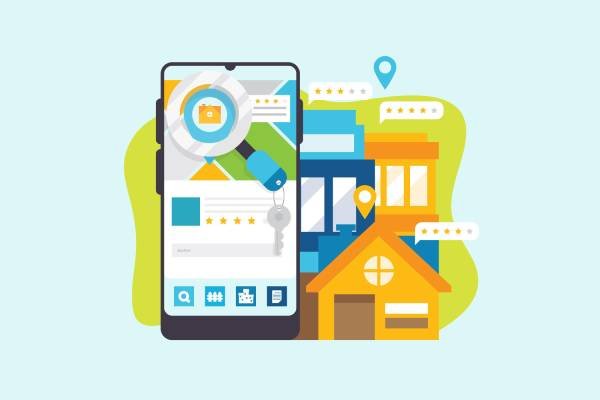10 Essential Steps to Take Right After Launching Your App
Successful mobile application development requires more than creating and releasing an app on platforms like the Google Play Store and Apple App Store.
Marketing is essential for any application to be successful. Because there are so many applications on the internet, it is now more crucial than ever to concentrate on promoting your mobile application.
Given the fierce competition in the mobile app market, you need to employ modern branding techniques to connect with your target market.
Read on to learn what to do as soon as your app releases if you want to give it a chance to succeed in the ever-expanding app market.
Is launching an app free?
You don't need to invest a certain amount of money to create and release an app. However, there are fees associated with the Google Play Store and the Apple Store. To upload your app, you will require the App Developer Program, which has an annual fee of $99.
After registering for the Apple Developer Program, you can manage your apps and access App Store Connect. In contrast, Google Play Console requires a $25 one-time payment upon registration. Publishing and launching your mobile app is simple after establishing a connection with both platforms.
What Happens When A Mobile App Is Launched?
After releasing an app on app stores, you need to concentrate on branding it to attract the intended demographic and win over repeat users. Before we get into the particular measures you should follow right after publishing your app in the app stores, let's first review the significance of the post-app launch strategy.
How do you make the launch of a new app known?
The introduction of an app may be announced in various ways. Either your social media profiles or a well-written email might be used. Your launch plans will enhance your ability to attract potential clients. Make sure your app has eye-catching pictures and videos to draw users in.
[Also Read - ASO Strategy to Grow Your App in App Stores in 2024 ]
Important Steps After App Launch
The secret to success in any kind of endeavor, including releasing a new app in app stores, is preparation. It is crucial to promote your digital assets, such as applications, in the same way that you would not operate a traditional brick-and-mortar business without branding.
App launch tactics are equally crucial when launching a local application on a global scale. Regardless of the situation, effective app marketing is essential to stand out from the competitors and draw in new users.
You should take the following actions to put successful marketing techniques into practice if you want your app to reach the intended audience:

Step1: Create the Landing page for the app
One of the most dependable and economical ways to sell your app is to build a website for it. Using a variety of marketing methods will help you expand your user base and increase brand recognition.
Making a landing page for your mobile app allows you to market it both before and after it launches. The page should include an "About page" and screenshots of the mobile application. You may also include a video of the mobile app to demonstrate the user experience once it is completely finished and has a visually appealing interface.
In order to wow new potential users with your mobile app, you might include a few favorable customer reviews on the landing page. For people to sign up and quickly participate in beta testing your software, there has to be a mailing list sign-up option.
You may create a community and increase organic traffic to your website by including a blog. Nevertheless, you have the option to create a straightforward landing page because it is reasonable that not everyone wants to maintain a mobile application and a fully functional website.
Step 2: Employ Digital Marketing Techniques
All kinds of enterprises and corporations now heavily rely on digital marketing. The list of social media sites that are widely used and have enormous popularity worldwide is lengthy.
Therefore, in order to use social media marketing methods to reach a bigger audience, it is crucial to have a strong social media presence across a variety of platforms, including Facebook, LinkedIn, Instagram, and Twitter. Because people are more likely to find you naturally when you utilize social media appropriately, it is also an inexpensive method of promotion.
Social media is helpful not only for attracting new users but also for updating existing users about your software's newest features and upgrades. Using successful marketing techniques will help you raise the rate of client involvement.
As soon as you have chosen a specific name for your business and mobile application, you need to register your social media handles and accounts to get the most out of social media sites.
You may utilize social media to solicit consumer evaluations and input, which you can then include in your upcoming release. Additionally, social media data is crucial for figuring out who your target market is and improving the app's features. Ensure that the landing page and mobile shops, where consumers can download the app easily, are connected to your social media profiles.
Step 3: App Store Optimization (ASO)
Organic marketing includes things like App Store Optimization (ASO). By using ASO tactics, you may improve your mobile apps' attractiveness and visibility in app stores, which will lead to more downloads.
These days, ASO is required for freshly built applications to stand out in mobile shops. Otherwise, a newly released mobile app may be lost among the lengthy selection of games and applications in the app store.
ASO and search engine optimization are comparable in that both need the usage of goal keywords and high-quality pictures in order to rank better in search results. You will be able to enhance your conversion rate and draw in a lot of visitors naturally after you put the finest ASO techniques into effect.
Step 4: Make Use of Analytics and App Marketing Software
Data is the currency of the digital age. Ensuring the usability of your mobile application requires careful consideration of several factors based on in-depth data research.
You may use contemporary marketing and analytics tools to analyze an app and landing page based on different data sets to ensure that you are employing the ideal branding and marketing strategies.
After releasing an app on the app stores, you should use analytics and app marketing tools to track your company's development. Examining various metrics sets can help you enhance your marketing efforts and attract more users to your app.
Step 5: Establish an Onboarding Procedure
Gaining people to download and launch your app is only half the battle; the other half is keeping them interested. Your onboarding process may greatly influence whether or not a user stays engaged with your product.
What steps after the app launch are involved in creating an effective onboarding process? You will have a strong strategy in place if you adhere to the recommended practices listed below:
1. Don't bury the lead: Ensure that your user understands the value and advantages of using your app from the beginning. During the app onboarding lesson, this needs to be one of the first things the user sees and be clearly illustrated.
2. Highlight important features: Demonstrate to them the software's primary functions and how easy it is to accomplish a desired job. Callouts and highlighted buttons will make browsing easier and improve the user experience.
3. Make signing up simple: Since sign-ups sometimes act as a roadblock to app uptake, try to make the process as straightforward as possible. Avoid forcing them to register a new account whenever you can. Rather, new users can log in using Google or their current social network accounts.
4. Lead the way with a CTA: At the end of the onboarding process, it is a good idea to add a call to action (CTA) to assist the new user in getting started. This call to action (CTA) could compel users to do a task or just spark their interest in utilizing your app.
Step 6: Take the Comments Into Account
One of the most crucial steps after the app launch is to consider user input. One way to find out what early adopters think of the app and what changes they would like to see made to the general user experience and individual features is to ask them directly. You may reach a wider audience with your application promotion by depending on marketing data and application ratings.
Additionally, examine user behavior with your app. Users may begin utilizing the features in a way that deviates from what you had anticipated. To make sure users are satisfied with the app, pay special attention to the comments and reviews left on the app stores.
Gathering reviews and evaluating user feedback can help you consider the app's crucial success measures and ensure that you're headed in the correct direction. This information can also be used to draw in new users and please current ones.
Many users also evaluate applications based on their ratings. To keep your app stores' ratings high, make sure you consider user input.
Taking client input into consideration also entails fixing any flaws that early adopters or beta testers find in a program. If a program has significant bugs, the user is likely to quit using it. Therefore, it is critical to eliminate any problems and malfunctions as quickly as possible to maximize consumer happiness.
Step 7: Observe How Features Are Used
Although user reviews are often insightful, their behaviors may reveal much more. App analytics provide you the ability to keep a careful eye on usage—or rather, the lack thereof—and identify which features users are using and finding most appealing.
Misjudging how users will interact with your app is a common mistake. A feature that you wouldn't have thought anyone would use turns out to be the most popular, or vice versa.
Determining the behavior of users within your app is essential to its success. App analytics provide information that users are unable to deliver directly because they are ignorant of it or do not know how to, even if comments are usually helpful.
Because of this, it's important to continuously analyze use data in order to "read between the lines" and set priorities for upcoming improvements and app marketing initiatives.
You can monitor usage—or rather, the absence of it—and determine which features people are most interested in and utilizing with the help of app analytics. One typical error is assuming too much about how consumers will interact with your app. Sometimes, the most popular feature is one you wouldn't think anyone would use, and vice versa.
Step 8: Monitor Churn
If users are swarming to your app before leaving, there must be an issue with its stickiness. Understanding the precise point at which consumers begin to churn can help explain why. Which areas of your app still require work? How may the experience be customized to better suit the needs of the user? You may then attempt to counteract this by using app optimization and promotion.
After all, we know that 75% of consumers discontinue during the first three months, and 50% churn within the first thirty days. This is very unsettling information, particularly for app marketers. For this reason, tracking churn as soon as your app debuts is a crucial step after the app launch if you want to keep ahead of the curve and deal with problems head-on.
Step 9: Get the Correct Users
If you haven't already, the moment has come for you to start user acquisition marketing as an important step after the app launch. You should use the valuable information you've obtained about your target market while commencing your app acquisition campaigns.
Making sure you are receiving value for your money is crucial since running sponsored user acquisition efforts can be expensive. One reliable technique to gauge the effectiveness of your promotion is to know where the referral traffic to your app is coming from. To find out where your most engaged users are coming from, pay attention to the statistics. In this manner, you will be aware of which attempts to drop and where to concentrate your efforts more intently.
Step 10: Enhance Your User Interface
App design and experience are very important steps after the app launch. Consumers are used to seeing some lovely app interfaces that are both functional and stylish. In addition to conducting your research, you should always consider how to improve the user interface and overall experience of your application.
But keep in mind that even if an app has the most exquisite look in the world, its poor functioning will ruin it for you. It is also true in the other way. For your software to compete in the constantly growing industry, it must be of the highest caliber.
Push or in-app messages should be divided according to the user's behavior and preferences to make them feel like they were made particularly for them. The idea is for customers to feel as though your software knows them when they use it.
[ Also Read - Complete Guide To Mobile App Marketing In 2024 ]
Key Steps After App Launch
| Step | Description |
|---|---|
| 1. Create the Landing Page | Develop a dedicated website for your app to provide more information and drive downloads. |
| 2. Employ Digital Marketing Techniques | Utilize social media platforms, SEO, and other digital marketing strategies to reach a wider audience. |
| 3. App Store Optimization (ASO) | Optimize your app's visibility in app stores through relevant keywords, descriptions, and visuals. |
| 4. Make Use of Analytics and App Marketing Software | Track app performance, and user behavior, and identify areas for improvement. |
| 5. Establish an Onboarding Procedure | Guide new users through the app's features and functionality to enhance the initial experience. |
| 6. Take the Comments Into Account | Respond to user feedback, address issues, and improve the app based on user suggestions. |
| 7. Observe How Features Are Used | Analyze user behavior to identify popular features and areas for optimization. |
| 8. Monitor Churn | Track user retention and identify reasons for app abandonment to address potential issues. |
| 9. Get the Correct Users | Focus on acquiring users who are most likely to engage with and benefit from your app. |
| 10. Enhance Your User Interface | Continuously improve the app's design, usability, and overall user experience. |
[Also Read - Future of AI in Mobile App Development ]
Conclusion
These steps after the app launch demonstrate that branding and app development are ongoing processes. You need to monitor the essential data to ensure that your mobile application is reaching its intended audience.
After your app opens, you might feel the desire to take a well-earned vacation, but you might fight the desire. The first few days after it launches are critical if you want to ensure that your app has a shot against some serious competition.
With a quicker development process and more time, energy, and resources available to concentrate on app branding and promotion, IPH Technologies will eventually assist you in making your app successful.
Frequently Asked Questions

Read more blogs

Time and Cost of Developing an AI like ChatGPT: Key Factors Explored
Explore the factors influencing the time and cost of developing an AI model like ChatGPT. Understand key considerations for successful AI ap

Guide to Successful Real Estate App Development: Features, Technologies, and More
Explore the advantages of developing a real estate app, key features, technologies to employ, and the importance of collaborating with a Rea

Custom vs. Template-Based Website Development: A Comprehensive Cost Comparison Guide
Explore the costs, pros, and cons of custom website development vs. template-based solutions. Make an informed decision for your online pres
